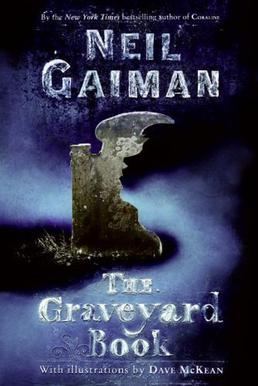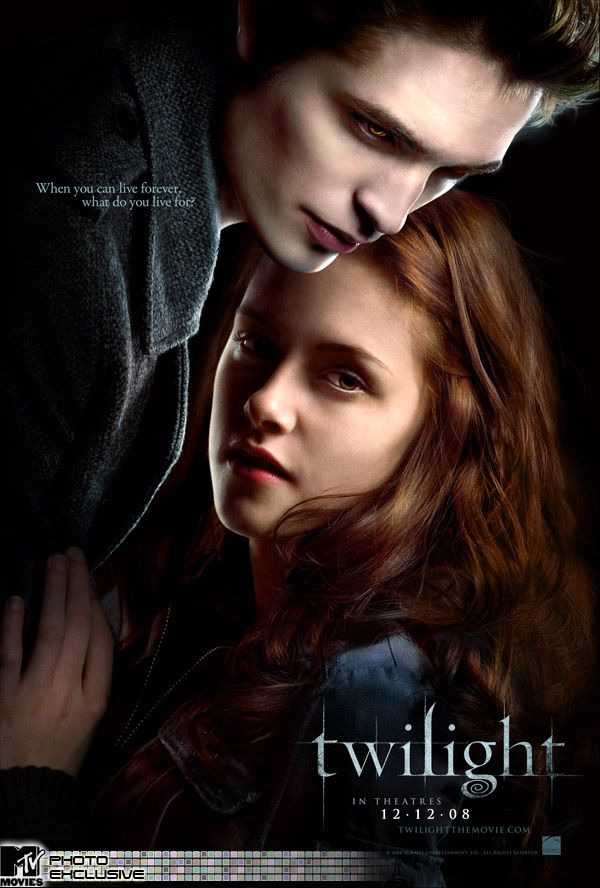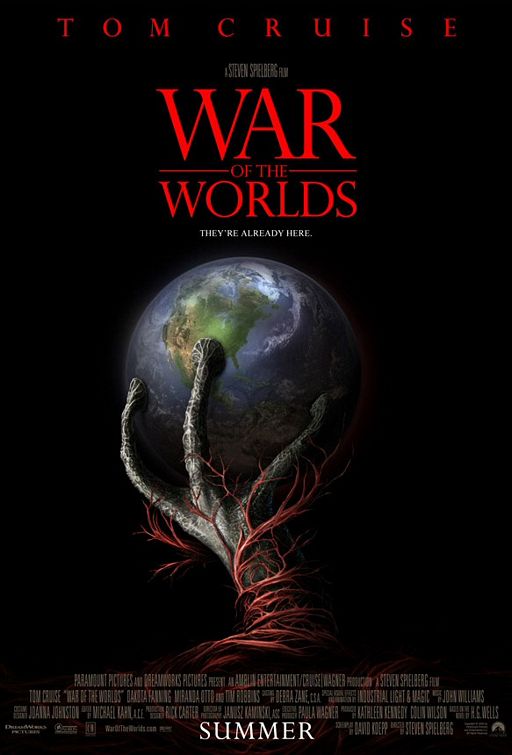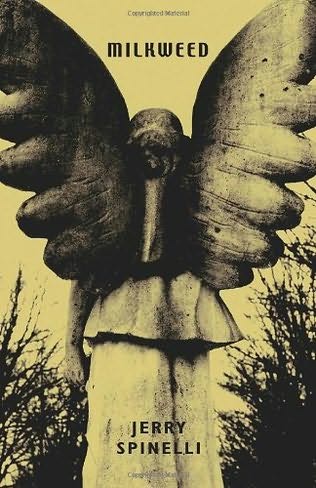Author Study:
Christopher Paolini—Dragon Boy
By Elizabeth Waterbury
School of Library and Information Science
San Jose State University
LIBR 264-10
Wrenn-Estes
Fall 2009
Christopher Paolini is the current boy wonder on the publishing scene. His body of work consists of three, soon to be four, weighty fantasy novels which comprise The Inheritance Cycle: Eragon, Eldest, and Brisingr. The reason for Paolini’s fame is not only that all three books spent significant amounts of time on the New York Times Bestseller list and won numerous awards (for a complete list, see Appendix A), but that he began the first book at the tender age of fifteen. Through hard work, family support, and extreme perseverance, Paolini’s work became an important part of tween and YA literature, and an inspiration to young writers everywhere.
Paolini’s early life and unusual education paved the way towards becoming a full-time, published writer at eighteen. Born on November 17, 1983, he was raised in Paradise Valley, Montana. His family consists of his father, Kenneth, his mother, Talita, and his younger sister, Angela. His mother was a Montessori teacher before she had Christopher, and she homeschooled him and his sister through graduation from high school; he received his GED at fifteen. Talita emphasized creativity and reading throughout their schooling, although the young Christopher was, at first, extremely resistant to her efforts to get him to read. In his essay entitled, “Dragon Tales”, Christopher says he remembers screaming, “I hate to read! I don’t see why I have to learn this, I’m never going to use it.” His first trip to the public library provided the key to his subsequent obsession with books; he discovered that books contained other worlds and fascinating people for him to get to know.
By the time he was a teenager, his head was filled with his own stories, but his first effort to write a book when he was fourteen went nowhere. When he got his GED at fifteen, he had plenty of spare time before college, so he settled in to write a book that he himself would enjoy reading. He realized that he needed more information on how to write a novel length work, so he read books on how to accomplish this feat, and got a nine page plot map down on paper before he tried again. He spent his fifteenth year writing Eragon, and his sixteenth year revising and editing it before giving it to his parents to read. They were so impressed that they decided to publish it themselves instead of shopping it to publishing houses; they wanted to maintain creative control over the work. The family spent the next year working on the cover art and maps, editing, and compiling marketing materials. In November of 2001, they had 10,000 published copies, and went on a book-talking tour across the United States. Although they sold a fair number of books, it was not enough, and the family was having extreme financial trouble. In the summer of 2002, Carl Hiaasen’s stepson, Ryan, happened to read the book—he showed it to his famous stepfather, who took it to his publisher, Alfred A. Knopf, and the rest is history.
Paolini’s books are of the high fantasy genre made famous (some might say invented) by J.R.R. Tolkien: they contain the archetypal elements of magic, kings, evil sorcerers, other races (elves, dwarves, etc.), special swords, hero quests, etc. There were originally supposed to be three books telling the story, but in the middle of his third book, Paolini discovered that the book was either going to be 1400 pages long, or he was going to be writing a fourth book. Each book picks up shortly after the previous book’s ending; in fact, in an interview, Paolini expressed his wish that he could have written them all as just one book to improve the story’s continuity in his mind. The interviewer commented wryly that the book would be quite heavy.
The Inheritance Cycle story follows a fifteen year old boy named Eragon, who finds a dragon egg. When the egg hatches, the young dragon binds them together, and Eragon becomes the land of Alagesia’s last Dragon Rider. When his family is destroyed by minions of the evil king Galbatorix, Eragon accepts that it is his destiny, along with his dragon Saphira’s, to end Galbatorix’ long reign of terror. He joins the rebel forces, who cherish him as the sole remainder of the proud race of Dragon Riders, who were the guardians of Alagesia for 2000 years before being destroyed by Galbatorix’ treachery. The rebels call themselves the Varden, and they are aided by the dwarves and the elves. Eragon must master the art of magic in order to fight effectively against Galbatorix’ sorcery, and he studies and learns many secrets from the elves before joining the fight in earnest. When the third book ends, Eragon, the Varden, and their allies are marching on Galbatorix’ stronghold to bring the battle to him and hopefully end the war in triumph.
Each of the three books offer progressively more sophisticated character development and viewpoints, reflecting Paolini’s own increasing maturity over the years. Eragon’s internal struggles as he wrestles with complex issues are a vital component of all three books. Although few real-life adolescents will find themselves in situations as dire and extreme as those Eragon encounters, most young readers will recognize and identify with the frequent and conflicted inner dialog. Eragon must choose between personal vengeance and the greater good. He must decide whether his honor will allow him to hide behind others because he too valuable to risk. He is faced with the pitfalls of having great power, and only using it wisely. He grapples with the realities of war, and whether or not killing is acceptable, and when. He learns hard lessons about friendship and selflessness. He is tormented by the knowledge that his parents were evil, and wonders if he can overcome his terrible legacy through self-will. He spends long hours during travel wondering how to reconcile the religious beliefs of the three different cultures to which he is connected (human, dwarf, and elf). He also “falls in love with the wrong girl”, and must deal with his feelings that must remain unrequited.
When 1913 pages of high fantasy are condensed into a half-page summary, the elements have a tendency to look a little trite. Paolini himself admits that he likes the archetypical elements of fantasy, and deliberately included them, especially the coming-of-age of the hero. A well-read fantasy buff can also see the influences of other fantasy works in The Inheritance Cycle: Paolini cites Jeremy Thatcher, Dragon Hatcher by Bruce Coville, Star Wars, by George Lucas, Magician, by Raymond Feist, Dune by Frank Herbert, The Lord of the Rings, by J.R.R. Tolkien, and The Dragonriders of Pern, by Anne McCaffrey as inspiration for his writing. The power of this story, however, lies in the unique details, the imaginatively complete setting, fast-paced action, and the development and interaction of the well-drawn characters (Paolini also has an annoying gift for ending a chapter in such a manner that the reader is forced to turn the page).
Although Paolini’s imagination was the primary source of the story’s details, names, languages, and characters, there are a few notable exceptions. The dwarves’ formidable Boer mountains were based on Montana’s Beartooth Mountains, where Paolini lives. The character named Angela, who is one of the quirkiest and most unusual people in the story, is both based on and named after Christopher’s sister. The description of the forging of Eragon’s sword was heavily influenced by The Craft of the Japanese Sword, by Leon and Hiroko Kapp. The elf language is based on Old Norse, which Paolini spent months studying.
Most professional reviewers felt the energy and intensity in Paolini’s work, too. The vast majority of target-age review sources, e.g. School Library Journal, The Hornbook, and others, gave positive reviews. Although a few were mildly critical of his literary mechanics, dialogue, and heavily conventional plot elements, all of them liked the books as a whole. The most frequently cited review of Eragon is the New York Times Book Review article by Liz Rosenburg titled, “The Egg and Him”. Rosenburg’s criticisms include phrases like, “originality has never been one of the fantasy genre's strengths”, “clichéd descriptions… B-movie dialogue”, and “the plot stumbles and jerks along, with gaps in logic and characters dropped, then suddenly remembered, or new ones invented at the last minute”. Once she is finished being merciless, however, Rosenburg admits that, “as Beatrix Potter wrote, 'Genius -- like murder -- will out.' Eragon, for all its flaws, is an authentic work of great talent…I found myself dreaming about it at night, and reaching for it as soon as I woke. Like countless other readers, I am waiting to see what happens next, with wonder, with admiration and with hope.”
There are, of course, serious detractors, as with any famous work. Among those who panned The Inheritance Cycle across the board is Entertainment Weekly’s Jennifer Reese, who referred to Eldest as, “mind-numbingly silly” and “a Lord of the Rings knock-off”. Self-made blog critics have derided the books as being under-researched, with incomplete characters and purple prose. Paolini’s hecklers are in the minority, however, and they do not give credit where it is due to the extreme youth and inexperience of the author. They also blatantly disregard the fact that The Inheritance Cycle was written primarily for a ‘tween audience, and criticize it from an adult standpoint.
Critical reviews, however positive or negative, do not provide an idea of the scope of The Inheritance Cycle’s popularity with readers. His third book, Brisingr, was one of the most successful children’s books in history; both the initial print run and first-day sales were the largest ever for the Random House Children's Book division (Wikipedia, 2008). Paolini’s fan base is enormous and loyal. If the blogs, wikis, chats, and question and answer sessions are to be believed, fans spend an inordinate amount of time thinking and speculating on the details of the plot, characters, and setting. Besides Paolini’s official website, Alagesia.com, there are multiple fan websites. There is an infowiki, where fans have written 472 articles (as of November 15, 2009) to keep readers straight about plot, characters, languages, places, and loose ends. Shurtugal.com is the officially recognized fan-run website. It offers clothing, video games, author interview transcripts, links, fan art, fan fiction, discussion forums, and monthly Q&A sessions in which Paolini participates.
An interesting side note about the fans of The Inheritance Cycle: they were not particularly pleased with the movie Eragon! The websites are filled with fan complaints that the movie got plot details wrong, such as the statement that when a dragon or rider dies, so does the partner—this is incorrect, and in fact becomes crucial to the plot in the Brisingr. They also seemed quite disappointed by Saphira’s appearance, and felt that the film’s creators failed to match Paolini’s vision of the dragon. There was great objection to Arya’s casting, as it was inaccurate in both hair-color and personality. When questioned, Paolini is careful not to criticize the movie in his responses, saying only that it was Fox 2000’s vision of his work, and that he had no control over anything except the screenplay.
Besides responding to fan questions online, Paolini participates in podcast interviews, and has appeared on The Today Show and MSNBC. Following the release of each of his three books, he has toured extensively in the United States, Canada, the United Kingdom, Spain, Germany, France, and Italy. He is currently working full-time on the fourth and final installment of the series, the title of which is as of yet unreleased.
Paolini’s contribution to tween literature comes not only in the form of providing books that tempt kids to read well beyond their normal level, but also in providing inspiration to write. One website, compulsivereader.com, features a 500 word review of Brisingr written by an eleven year old boy. This reviewer praises the book’s “outstanding imagery”, “nail-biting suspense”, and realistic characters with moral qualms regarding the killing necessary in war. In a question and answer session on Alagesia.com, a mom from Georgia writes, “Christopher: I home-school my children, and we all love your books. My son especially is interested in writing his own stories, too. He is 11, and has some wonderful ideas. What would you recommend for helping him on his way? What helped you the most?” Paolini takes the time to answer in his down-to-earth and serious way, “I’m delighted to hear that you and your children enjoy my books. Looking back at my own homeschooling experience, I realize my parents are responsible for igniting, maintaining, and encouraging my deep love of reading and writing. Without their support, I never would have been able to finish Eragon and Eldest. I owe my family everything. The best advice I can give is to encourage your son to read, read, read! And discuss with him how authors craft their plots and dialogue. In addition, he should continue to study grammar and expand his vocabulary. He should write as often as possible. It doesn’t matter what the subject is, as long as it interests him. Fiction, non-fiction, poetry, plays, stories, song lyrics, letters, reports—so long as he practices the art of organizing his thoughts and transferring them to paper in a clear, focused, and vivid manner.”
Despite the wildly successful beginning of his writing career, Paolini has no plans to rest on his laurels. In his interview on The Today Show, he revealed that he looks forward to writing both more fantasy novels and to branching out into different genres. Readers of all ages can look forward to the remainder of Paolini’s career as he applies the skill, maturity, and experience he has gained through writing and promoting The Inheritance Cycle. We are left to wonder whether Paolini will continue to write for a young audience, but it is safe to say that his future books will be a positive contribution to American literature.
References
Alegesia.com. The Author. Retrieved on November 1, 2009 from: http://www.alagaesia.com/christopherpaolini.htm
Alegesia.com. Talking Trilogy with Christopher Paolini. Retrieved on November 1, 2009 from: http://www.alagaesia.com/talktrilogy.html
Ball, D. Brisingr by Christopher Paolini. [Web log message]. From Compulsive Reader website, retrieved on November 1, 2009 from: http://www.compulsivereader.com/html/index.php?name=News&file=article&sid=2060
Brisingr. In Wikipedia. Retrieved on November 3, 2009 from: http://en.wikipedia.org/wiki/Brisingr
Children’s Literature Comprehensive Database. Children’s Literature Reviews. [Eragon. Eldest. Brisingr.] Retrieved on November 1, 2009 from: http://clcd.odyssi.com.libaccess.sjlibrary.org/cgi-bin/member/search
Christopher Paolini. In Wikipedia. Retrieved on November 3, 2009 from: http://en.wikipedia.org/wiki/Christopher_Paolini
Couri, S., Jones, T.E., Toth, L., Charnizon, M., Grabarek, D., & Raben, D. (2005). [Review of Eldest]. School Library Journal, 51(10).
Eldest. In Wikipedia. Retrieved on November 3, 2009 from: http://en.wikipedia.org/wiki/Eldest
Encyclopedia of World Biography. Christopher Paolini. Retrieved on November 1, 2009 from: http://www.notablebiographies.com/news/Ow-Sh/Paolini-Christopher.html
Eragon. In Wikipedia. Retrieved on November 3, 2009 from: http://en.wikipedia.org/wiki/Eragon
Paolini, C. (2003). Eragon. New York, NY: Alfred A. Knopf.
Paolini, C. (2005). Eldest. New York, Alfred A. Knopf.
Paolini, C. (2008). Brisingr. New York, Alfred A. Knopf.
Paolini, C. Dragon Tales: An Essay on Becoming a Writer. Retrieved on November 1, 2009 from: http://www.randomhouse.com/teens/eragon/dragontales.htm
Paolini, C. (2004). How I write: Interview with Christopher Paolini. Writer, 117(3). 66.
Random House. Author Spotlight: Christopher Paolini. Retrieved on November 1, 2009 from: http://www.randomhouse.com/author/results.pperl?authorid=54388&view=full_sptlght
Reese, J. (2005, August 24). [Book Review: Eldest]. Entertainment Weekly. Retrieved on November 3, 2009 from: http://www.ew.com/ew/article/0,,1095866,00.htm
Rosenberg, L. (2003, November 16). The egg and him. [Book review of Eragon]. New York Times. Retrieved on November 3, 2009 from: http://www.nytimes.com/2003/11/16/books/children-s-books-the-egg-and-him.html
Shur’tugal: Inheritance at its Best. Christopher Paolini Interview Archive. Retrieved on November 3, 2009 from: http://www.shurtugal.com/?id=media/interviews/index
Shur’tugal’s Open Encyclopedia. Criticism of the Inheritance Cycle. Retrieved on November 3, 2009 from: http://shurtugal.com/wiki/index.php5/Criticism_of_the_Inheritance_Cycle
Today Show. A Great Inheritance. Brisingr: Paolini’s Latest Dragon Tale. [Video file]. Retrieved on November 3, 2009 from: http://today.msnbc.msn.com/id/26184891/vp/26788932#26788932
Appendix A
Awards, Honors, Prizes
Eragon
Arizona Young Readers' Award, 2006 Winner Teen Book Arizona
Beehive Award, 2004-2005 Winner Young Adult Utah
Book of the Year Award, 2004 Winner Kid's Non-Illustrated United States
Book Sense Book of the Year Award, 2004 Winner Children's Literature United States
Books I Love Best Yearly (BILBY) Awards, 2007 Shortlist Older Readers Australia
Borders Original Voices Award, 2003 Finalist Intermediate/Young Adult Literature United States
Buckeye Children's Book Award, 2007 Winner Grades 6-8 Ohio
Colorado Blue Spruce Young Adult Book Award, 2004-2005 Winner Colorado
Colorado Children's Book Award, 2005 Winner Junior Novel Colorado
Eliot Rosewater Indiana High School Book Award, 2006 Winner Indiana
Evergreen Young Adult Book Award, 2006 Winner Washington
Florida Teens Read, 2006 Winner Florida
Gateway Readers Award, 2006 1st Place Young Adult Division Missouri
Golden Archer Award, 2006 Winner Middle/Junior High School Wisconsin
Iowa Teen Award, 2008 Winner Iowa
Kanga Award, 2005 Top 15 Book Year 6-7 Australia
Nene Award, 2006 Winner Hawaii
Pennsylvania Young Readers' Choice Award, 2005 Winner Grades 6-8 Pennsylvania
Rebecca Caudill Young Readers' Book Award, 2006 Winner Illinois
Rhode Island Teen Book Award, 2005 Winner Rhode Island
Sequoyah Book Award, 2006 Winner Young Adult United States
Soaring Eagle Book Award, 2005 Winner Grades 7-12 Wyoming
South Carolina Young Adult Book Award, 2006 Winner United States
Teens' Top Ten List, 2004 Winner United States
Virginia Readers' Choice Award, 2006 Winner Middle School Virginia
Volunteer State Book Award, 2006 Winner Grades 7-12 Tennessee
West Australian Young Readers' Book Award (WAYRBA), 2005 Reading List Older Reader Australia
White Ravens Award, 2004 Winner United States United States
Young Reader's Choice Award, 2006 Winner Grades 7-9 United States
Eldest
Book Sense Book of the Year Award, 2006 Honor Book Children's Literature United States
Children's Book of the Year, 2006 Shortlist United Kingdom
Colorado Blue Spruce Young Adult Book Award, 2007 Winner United States
Golden Archer Award, 2007-2008 Nominee Middle/Junior High Wisconsin
Quill Awards, 2006 Winner Young Adult/Teen United States
Soaring Eagle Book Award, 2007 Winner Grades 7-12 Wyoming
West Australian Young Readers' Book Award (WAYRBA), 2006 Reading List Older Reader Australia
Brisingr
Children's Choice Book Award, 2009 Finalist Author of the Year United States
Cybils, 2008 Nominee Fantasy and Science Fiction (Young Adult) United States














